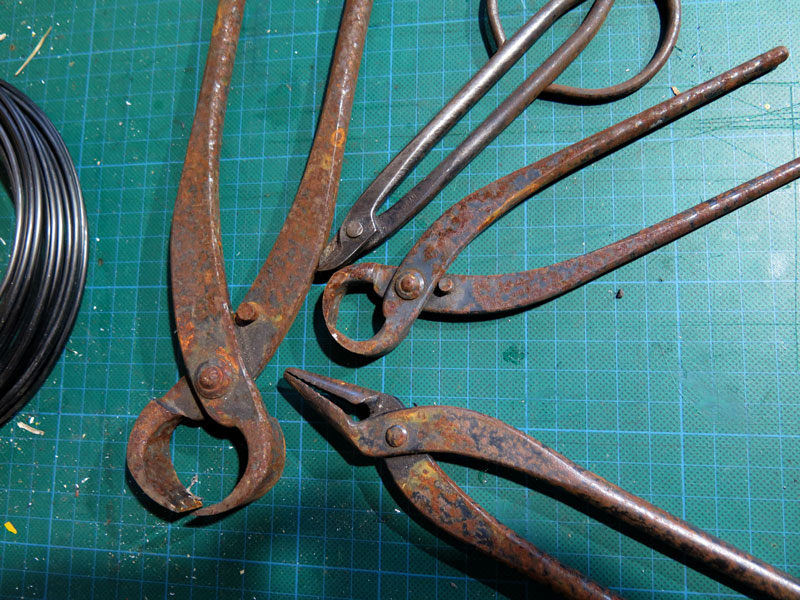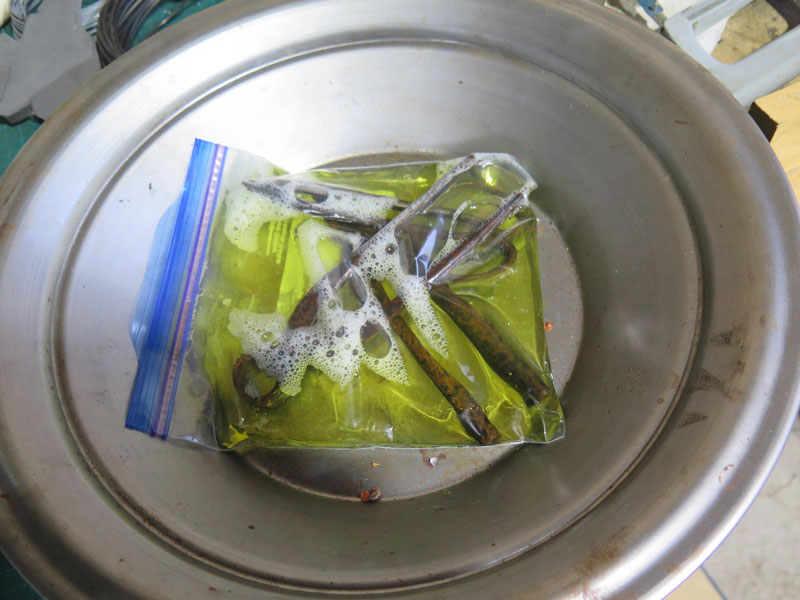Every bonsai growers secret shame is often buried in the bottom of tool boxes or hidden away from prying eyes.
Once glossy black, smooth and sometimes hand crafted, forged tools forgotten on a bench for mere minutes (or so it seems) can soon turn into rusty messes.
But don’t fear, you don’t have to cast such shame upon yourself and your family, there is a solution……….. (that doesn’t involve buying stainless steel tools).
Lets talk about what the black coating of steel tools is. The process that the tools have been through is called ‘Bluing’.
Bluing is essentially an oxidised layer or more simply, a black/dark blue rust. It forms a layer of oxidisation similar to the oxidised surface of aluminium which prevents further oxidisation to the surfaces below. Essentially this black ‘rust’ or (black oxide) prevents the red rust or (red oxide).
Of course black oxide only prevents this so far, so if conditions are right or moisture levels are great enough the tools will eventually rust. Which is what happened to the tools above. (They may or may not have been left outside for a period of time.)
The first step in restoring the black oxide coating is to remove the rust. Unfortunately black oxide being chemically very similar to red oxide means that in most cases removing the red also removes the black.
Now there are heaps of different ways to remove rust from mechanical (wire brushes and sandpaper) to acids, electrolysis and other chemical solutions.
For the above tools I chose a product called ‘Evaporust’ which removes rust well but doesn’t damage the metal beneath like an acid might which is another good method (citric acid works really well and is cheap but you need to keep an eye on the removal).
After a day or so of soaking the tools come out completely rustfree (of red and black rust).
Now there are two main ways to replace the Bluing; hot bluing and cold bluing.
For the home gamer, cold bluing is probably the most accessable and there are plenty of cold blue products that are mostly aimed as restoring firearm finishes. They usually have pretty clear instructions but for the most part it involves painting on the solution with a cotton swab. (heating the tools with a hair dryer prior to application can make for better results.)
Hot bluing is usually more of an industrial process as the chemical mix used is very toxic/caustic and usually done at high temps.
Hot bluing usually produces a better finish but for a couple of bonsai tools the cold bluing process is generally acceptable.
It can be hard to get a good finish in cold bluing as immaculate preparation and minimum contamination of the steel surface are big drivers of the end result. If you are not too fussy however, applying multiple passes/ coats usually ends in an acceptable end result.
My tools came out OK. Not perfect but certainly better than the rusty mess they began as. If i had perhaps acid etched them a little or done a better job of de-greasing between coats the result would have been less patchy. But for tools that are going to get knocked around and used, it’s good enough.





1 comment
Comments feed for this article
August 8, 2020 at 7:42 PM
Rudy h
HI,
Another rust removing tip. Soak in vinegar. Very inexpensive and works very,very well.
Regards
Rudy